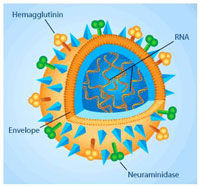Biovitrum acquires promising anti-obesity drug leads from BioFocus
Advertisement
Chesterford Research Park, UK and Stockholm, Sweden. BioFocus plc., a world leader in drug discovery, and Biovitrum today announce that Biovitrum has acquired from BioFocus the rights to a promising research project in obesity. The research project, which currently is at the end of the lead generation phase, focuses on blocking signaling through a specific G-protein coupled receptor (GPCR) that is believed to be relevant to weight reduction. The project has been developed within the GPCR lead generation joint venture between Biovitrum and BioFocus, initiated in 2001.
Through the new agreement, Biovitrum will gain full rights to potential drug candidates in obesity. The licensed lead program contains compounds that are potent and selective inhibitors of this specific receptor. Biovitrum intends to continue to develop the compounds, with the goal of finding a new and effective treatment for people suffering from obesity. BioFocus will, in return for the product rights, receive an upfront payment, milestones and royalties.
"This agreement further enhances Biovitrum's position in metabolic diseases research and will give us additional insight in, and novel treatment opportunities for, obesity," says Johan Kördel, SVP Business Development, Biovitrum. "By licensing a program based on this technology, we are confident that we have high quality chemical leads that can be developed into drugs faster than the industry standard."
Geoff McMillan, BioFocus's Chief Executive, said: "This agreement is an important step in the validation of the Company's scientific capability and business model, underscoring our ability to generate substantial current and long-term returns through investment in collaborative and proprietary drug discovery."
The incidence of obesity is rising to pandemic proportions. Globally, more than 300 million people are estimated to be obese and 1 billion are overweight. Obesity causes secondary complications such as hypertension, dyslipidemia, atherosclerosis and several cardiovascular disorders. The need for new and effective pharmaceutical treatment is significant.
























































